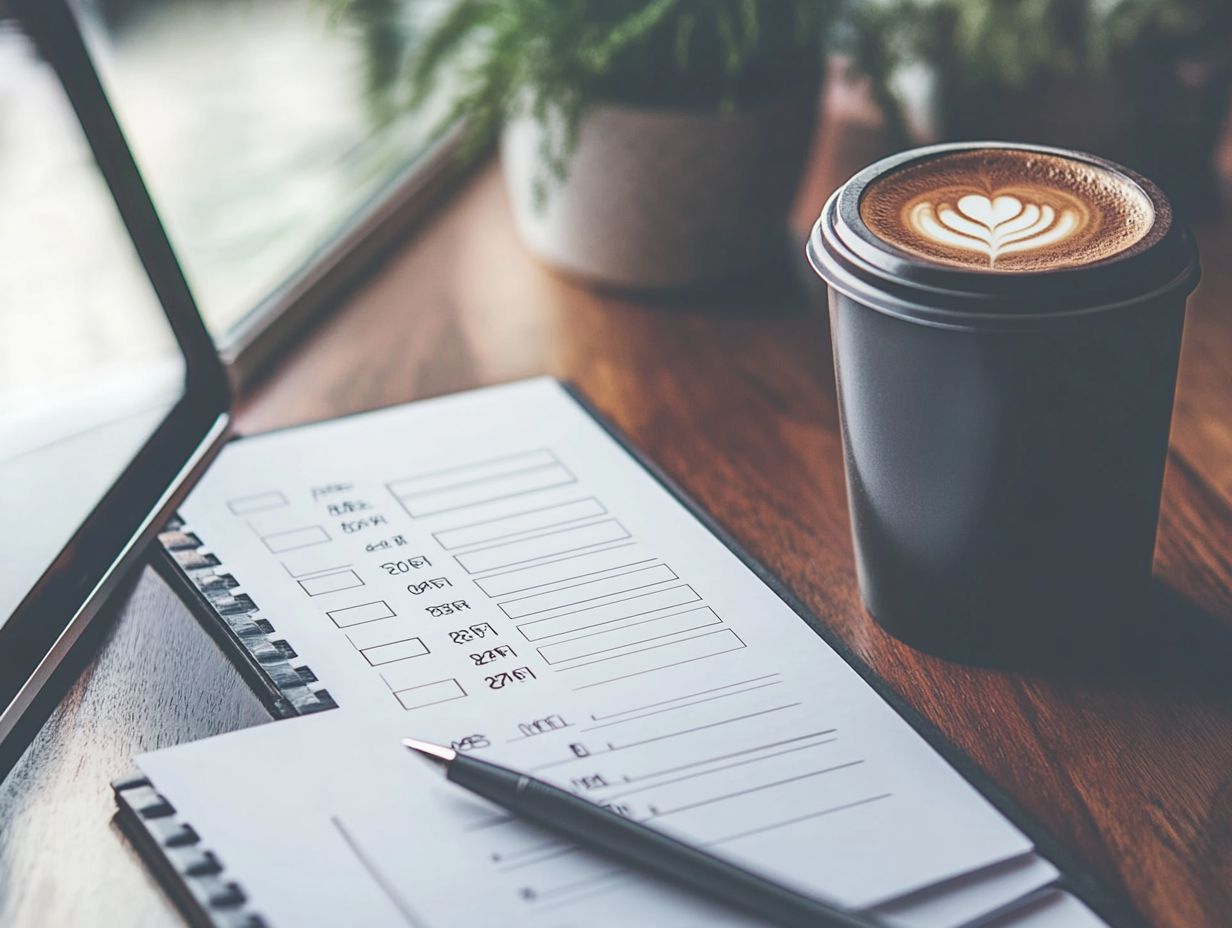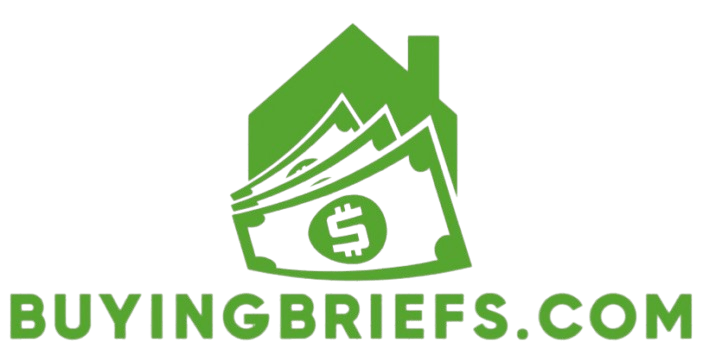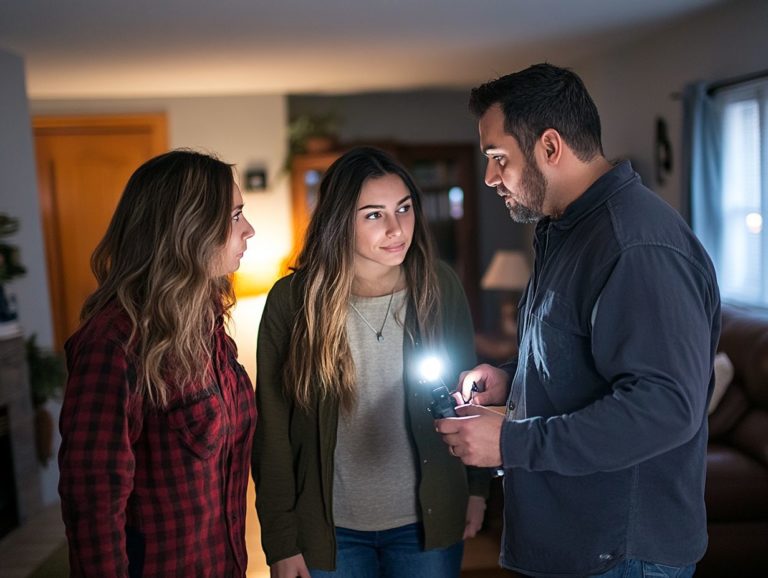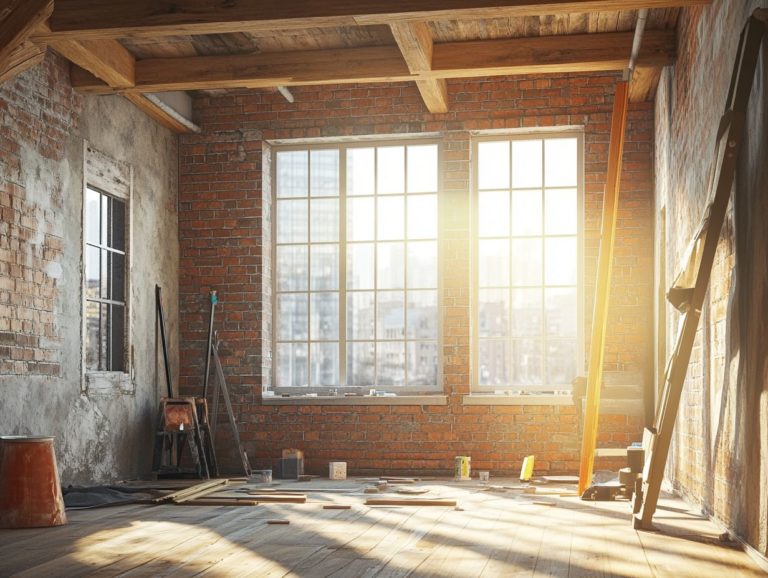How to Create a Home Buying Checklist
Buying a home is a significant decision. A solid checklist can make this journey smoother and more enjoyable.
This guide outlines the essential steps to create a comprehensive home buying checklist. You’ll learn to set your budget, identify must-haves, evaluate properties, and negotiate terms with confidence.
You will also discover pitfalls to avoid and tips to prioritize your checklist. Whether this is your first adventure or you have experience, this information empowers you!
Contents
- Key Takeaways:
- 1. Set Your Budget
- 2. Determine Your Must-Haves and Deal Breakers
- 3. Research Neighborhoods
- 4. Choose Your Real Estate Agent Wisely
- 5. Get Approved for a Mortgage
- 6. Attend Open Houses and Schedule Private Showings
- 7. Evaluate the Property
- 8. Consider the Resale Value
- 9. Review the Home Inspection Report
- 10. Negotiate the Price and Terms
- 11. Review and Sign the Contract
- 12. Finalize Your Mortgage and Closing Details
- 13. Plan for Moving and Settling In
- 14. Complete a Final Walkthrough
- 15. Celebrate Your New Home!
- What Are the Common Mistakes to Avoid When Creating a Home Buying Checklist?
- Frequently Asked Questions
Key Takeaways:

Set a budget to avoid overspending and financial stress.
Make a list of must-haves and deal-breakers to save time.
Research neighborhoods to find the best location for your needs.
1. Set Your Budget
Setting your budget is crucial. It helps you evaluate your finances, explore down payment options, and calculate monthly payments.
An affordability calculator offers insights into your financial landscape. It considers costs like property taxes and monthly mortgage commitments.
This tool guides you in prioritizing expenses and setting realistic limits. It also helps you prepare for unexpected costs that may arise.
This approach makes transitioning to homeownership secure. A thorough financial checkup supports informed decisions and long-term satisfaction.
2. Determine Your Must-Haves and Deal Breakers
Identifying your must-haves and deal breakers is key in house hunting. This clarity helps you prioritize your needs.
Create a list of essential features and non-negotiables to tailor your search. Reflect on routines, future plans, and aspirations to identify vital amenities, like schools or workspace.
This clarity aids in informed decisions and streamlines your buying journey. You ll spend less time on properties that don t meet your criteria.
Establishing these parameters enhances your satisfaction with your final choice.
3. Research Neighborhoods
Researching neighborhoods is essential. It helps you understand the housing market and property values.
As you explore homes, note local amenities like parks and shops that enhance your living experience. School districts matter too; homes in reputable areas often hold value better.
Consider crime rates, as they impact safety and insurance costs. Look at future development plans for insights into changes that could affect values.
Use online resources like community reviews and forums for valuable information. These tools help you make informed decisions!
4. Choose Your Real Estate Agent Wisely
Finding a qualified real estate agent is crucial for your home-buying journey. They have local market knowledge, help with negotiations, and guide you through the process.
Your choice of agent can significantly impact your experience and the final outcome of your investment. Look for someone with ample experience; this often means a better understanding of pricing and market trends.
Effective communication is vital. An agent who listens to you and keeps you updated will make your journey smoother. Choose someone knowledgeable about the local market for insights into neighborhoods and property values.
Hiring a buyer’s agent puts your interests first during negotiations. This leads to better terms and gives you peace of mind throughout the process.
5. Get Approved for a Mortgage
Getting approved for a mortgage is an essential step in your home-buying journey. It helps you understand what you can afford and simplifies the loan process.
Your journey starts with checking your credit report. This report is crucial for determining which loans you qualify for, whether fixed-rate or adjustable-rate. Understand your credit score and fix any issues early to appear as a reliable borrower.
With mortgage pre-approval, you boost your bargaining power. Sellers find your offers more attractive, and you ll feel more confident in your financial position as you search for your dream home.
6. Attend Open Houses and Schedule Private Showings
Attending open houses and private showings is a great way to explore homes. These visits let you assess properties closely and understand their value better.
To make the most of these opportunities, prepare a list of questions for the seller or agent. Ask about the roof’s age, renovations, and neighborhood details to gain clarity.
Take notes and pictures during your visits. This way, you can compare each property against your must-haves later, leading to better-informed decisions.
7. Evaluate the Property

Evaluating a property ensures it meets your expectations and is a solid investment. This includes a thorough home inspection and understanding its true value.
Pay close attention to the property’s structural integrity. Look for foundation cracks, signs of water damage, and the condition of the roof and walls. Identifying these issues early can save you money later.
Analyze comparable market prices to see if the property is fairly priced. Hiring a professional inspector and appraiser can uncover hidden problems, protecting your investment from unexpected costs.
8. Consider the Resale Value
When you’re purchasing a home, considering its resale value is essential. This aspect not only influences the long-term viability of your investment but also helps you grasp how market trends can sway property values.
Several factors significantly determine whether a property will appreciate or depreciate over time. For example, the location of the home can profoundly impact its attractiveness. Sought-after neighborhoods typically draw more buyers, boosting value.
The state of the home is equally important. If it needs repairs or renovations, it could deter potential buyers and lead to lower offers.
Local market trends affect property value. Fluctuations in supply and demand also play a crucial role.
Watch future developments, such as new schools or shopping centers, as these can enhance a community’s desirability. Conversely, neighborhood trends like an influx of businesses or rising crime rates may affect attractiveness and, in turn, the home’s value over the years.
9. Review the Home Inspection Report
Reviewing the home inspection report is a crucial step in your home buying journey, offering valuable insights into the property’s condition and any necessary repairs that could impact your negotiations.
By understanding the details within the report, you can pinpoint critical issues, such as safety concerns or structural deficiencies, that should take precedence.
For example, problems like faulty electrical systems or leaking roofs not only present immediate risks but can also lead to significant future expenses.
As a buyer, leveraging these findings can be a powerful negotiating tactic. You can request repairs to be completed before closing or use the need for repairs to justify a lower purchase price.
This approach helps reduce any financial burden, making your home buying experience more secure and advantageous.
10. Negotiate the Price and Terms
Negotiating the price and terms of a sale is an essential skill in your home buying journey, enabling you to secure a deal that works in your favor think earnest money deposits and favorable loan terms.
To master effective negotiation, start with thorough research. Delve into comparable sales in the area to ensure your offer is well-informed and competitive. Understanding the seller’s motivations can provide invaluable insights; knowing whether they need to sell quickly or are merely testing the waters can significantly shape your approach.
It’s crucial for you to remain both flexible and firm, ready to walk away if the terms don t align with your budget or expectations. This mindset not only safeguards your financial interests but also positions you as a serious contender in the bustling real estate market.
11. Review and Sign the Contract
Reviewing and signing the contract is a pivotal moment in your home buying journey. This step not only formalizes the agreement but also lays the groundwork for the closing process, demanding your careful attention to all necessary documents.
This stage is essential because it includes the price you pay, as well as critical components like contingencies conditions that need to be met for the sale to go through timelines, and obligations that both parties must uphold.
A thorough review can reveal potential issues that, if missed, could lead to complications later on.
It s wise for buyers to consider bringing in a qualified attorney to help navigate these intricacies. An attorney can offer valuable insights and ensure that every aspect of the agreement is clear and fair, ultimately protecting everyone’s interests.
12. Finalize Your Mortgage and Closing Details
Finalizing your mortgage is the thrilling last step before you hold the keys to your new home! During this phase, securing that all-important final mortgage approval and comprehending all closing costs come into play.
This crucial phase entails a meticulous review of the loan terms with your lender. It also ensures that every closing cost is transparently outlined and mutually agreed upon.
It s essential for you to gather all pertinent documents related to your mortgage application, such as pay stubs, tax returns, and bank statements, organizing them well ahead of the closing date.
Taking the time to carefully review these elements will help you sidestep any last-minute surprises, paving the way for a seamless transition into homeownership. By being diligent about these details, you can fully savor the excitement of moving into your new home without the stress of unresolved financial matters.
Now you’re ready to take the plunge and find your dream home let’s get started!
13. Plan for Moving and Settling In
Planning your move and settling into a new home is an exciting journey. It transforms owning a property into truly enjoying and personalizing your space.
Start with practical steps like hiring professional movers. They efficiently transport your belongings, saving you time and energy.
Packing systematically is essential. Label boxes by room and keep essential items accessible.
Set up utilities in advance to eliminate stress. This allows you to enjoy immediate comfort upon arrival.
Once settled, personalize your space with decor and family photos. Make it distinctly yours!
Explore your new neighborhood and connect with your neighbors. Building these relationships fosters a sense of community and helps you feel at home quickly.
14. Complete a Final Walkthrough

Completing a final walkthrough before closing is essential. This is your last chance to confirm that the home meets the agreed-upon condition and that all necessary repairs have been completed as outlined in the contract.
This crucial step helps you ensure the property aligns with your expectations. It also offers an opportunity to spot any last-minute issues that may have arisen since your last inspection.
During the walkthrough, pay close attention to details like the condition of appliances, walls, and fixtures. Make sure everything operates as it should.
If anything seems off, address these concerns with the seller immediately. Prompt communication can lead to quick resolutions, helping to protect your investment and provide peace of mind before finalizing your purchase.
15. Celebrate Your New Home!
Celebrating your new home is the perfect way to honor the end of your home-buying process and embrace the adventure of homeownership.
Whether you choose to host a cozy housewarming party or simply invite friends and family over for a relaxed get-together, these gatherings create lasting memories and deepen connections.
Think about personalizing your space with artwork or decor that reflects your personality. This enhances the joy and comfort of your new environment.
Adding thoughtful touches doesn t just make the house feel like home; it invites others into a space that tells your unique story, fostering a more enriching experience for everyone involved.
What Are the Common Mistakes to Avoid When Creating a Home Buying Checklist?
Creating a home buying checklist can elevate your experience. However, it’s vital to avoid common mistakes, and using the ultimate home staging checklist can ensure your planning and evaluation are thorough and effective.
Many buyers often overlook crucial financial considerations, like understanding their budget, exploring mortgage options, and identifying potential hidden costs tied to homeownership. Failing to research neighborhoods thoroughly may lead you to settle in an area that doesn’t fit your lifestyle or long-term goals.
Equally important is the necessity of home inspections. Ignoring them can leave you blindsided by underlying issues that may result in costly repairs later on.
To navigate these challenges successfully, adopt best practices such as crafting a comprehensive checklist. Include detailed financial evaluations, neighborhood assessments, and a clear inspection process.
How Can a Home Buying Checklist Help Streamline the Process?
A well-structured home buying checklist can significantly streamline your process by providing organization and clarity. It guides you through each critical step of your home buying journey.
This invaluable tool helps you maintain focus amidst the many decisions and details involved. By breaking the experience down into manageable tasks, it allows you to prioritize effectively, ensuring that essential steps from securing financing to scheduling home inspections are never overlooked.
A thoughtfully crafted checklist serves as a visual reminder, prompting necessary actions at the right time. This alleviates the stress often associated with purchasing a home.
Ultimately, this approach not only enhances your decision-making but also fosters a sense of confidence throughout the entire transaction.
What Are Some Additional Items to Consider Adding to Your Checklist?
When creating your home buying checklist, think about adding extra items that can elevate your purchasing experience, like the essential checklist for home inspections and necessary documentation.
It’s also important to include tasks such as checking your credit score and familiarizing yourself with local property taxes, as these can greatly influence your financing options and overall affordability.
Preparing for the closing process is crucial. This means gathering all relevant paperwork and understanding any potential fees that may arise. By thoughtfully addressing these aspects, you can significantly reduce the risk of surprises, leading to a smoother and more enjoyable transaction as you navigate the intricate world of real estate.
How Can You Prioritize Your Checklist Items?
Prioritizing your checklist items is essential in the home buying journey. It ensures you focus on the most significant aspects of the process and make informed decisions that align with your budget and needs.
To streamline this process effectively, consider categorizing your items into “must-haves” and “nice-to-haves.” This approach provides clarity on what is essential for achieving your dream home versus what can be considered optional.
Take a moment to reflect on how each item aligns with your personal goals in homeownership. For instance, if long-term investment is your priority, features that enhance property value should take precedence.
This method makes your decision-making fun and easy! It also helps you maintain a budget that supports your vision, allowing you to pursue your dream without unnecessary sacrifices.
What Are Some Red Flags to Look Out for During the Home Buying Process?
Being attuned to red flags during the home buying process can safeguard you against future headaches, as these warning signs often point to potential issues with the property’s condition, negotiations, or the terms of the sale.
For example, discrepancies highlighted in the home inspection report can reveal underlying problems that might require costly repairs in the future. Sellers must fully disclose critical information about the home s history or its condition; otherwise, you might find yourself facing unexpected surprises. Properties that linger on the market for a prolonged period can also raise suspicions about their desirability or hidden flaws.
To navigate these concerns gracefully, consider:
- Requesting a second inspection
- Insisting on complete transparency
- Conducting thorough market research to uncover why a property has been available for a long time
Maintaining clear communication with the seller can further illuminate any ambiguities and help you make informed decisions.
Frequently Asked Questions

What is a home buying checklist?
A home buying checklist is a list of tasks and items that you need to complete or consider when buying a new home. It helps you stay organized, prioritize your needs, and avoid missing important things during the home buying process.
Why do I need a home buying checklist?
A home buying checklist is essential because it helps you keep track of everything that needs to be done when buying a home. It ensures that you don’t miss any important steps or details and helps you stay on top of your home buying journey.
How do I create a home buying checklist?
To create a home buying checklist, start by listing all the tasks and items that need to be done during the home buying process. Then, organize them into categories such as financing, location, size, and features. For a more thorough approach, consider referring to a guide on how to create a home inspection prep checklist. Prioritize the most important tasks and set deadlines for each item on your list.
What should be included in a home buying checklist?
Your home buying checklist should include items such as securing financing, finding a real estate agent, researching neighborhoods, viewing homes, making an offer, conducting inspections, and completing paperwork. You can also include tasks specific to your needs, like checking for school districts or proximity to public transportation. For a comprehensive approach, consider how to prepare for homeownership.
When should I start using my home buying checklist?
You can start using your home buying checklist as soon as you decide to buy a property. It’s never too early to start planning and organizing your home buying journey. The earlier you start, the more prepared you will be, and the smoother the process will be.
Start your home buying checklist today, and ensure a successful journey toward your new home!
Can I use a pre-made home buying checklist?
Yes, you can use a pre-made home buying checklist as a starting point. Make it work for you!
Each home buying journey is unique. Personalizing your checklist helps you avoid missing important steps.
Don’t risk missing essential steps start customizing your checklist now! Get started today, and make your home buying experience smoother with a checklist tailored just for you!






